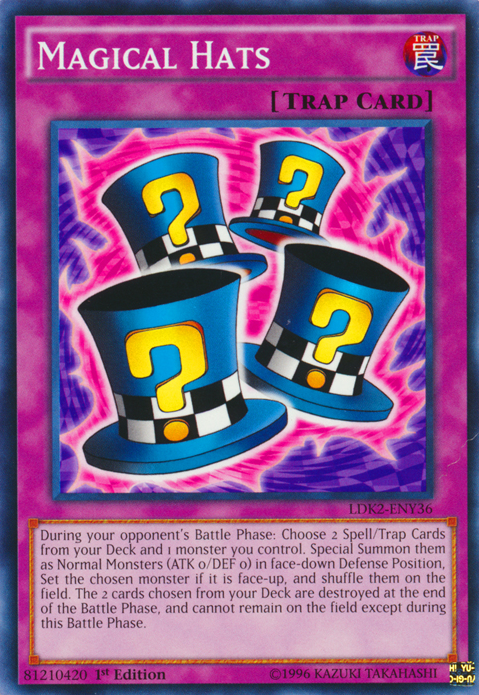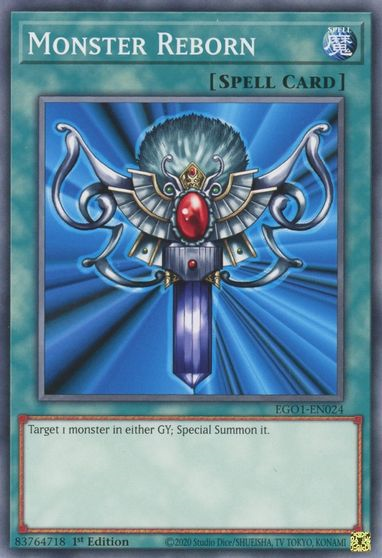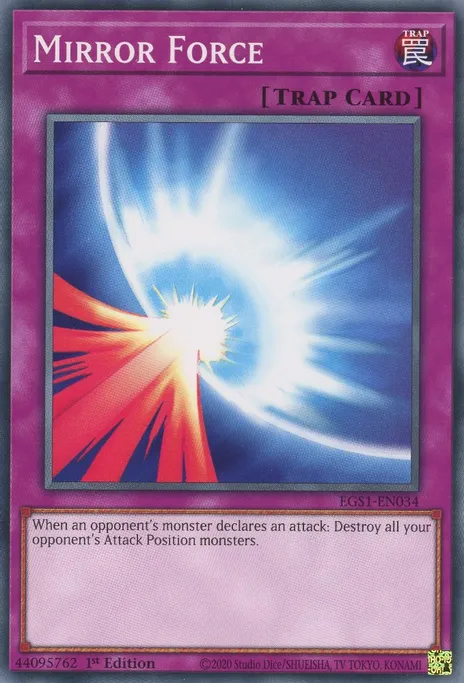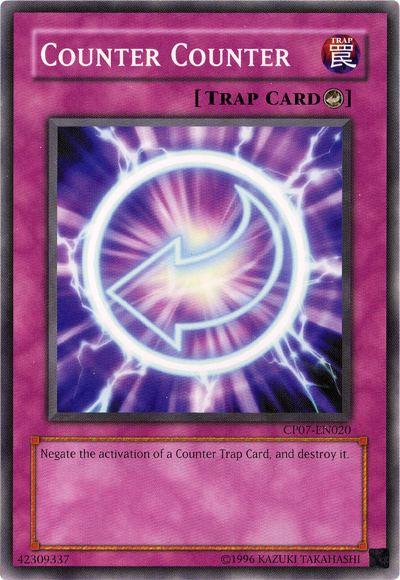[Startup] Magical Hats (3-1, 5th at Berlin Startup CO)
| Legality (show more) |
|---|
| Standard Ban List 23.09 (latest) |
| Standard Ban List 23.08 (active) |
| Rotation |
|---|
| Deck valid after Fifth Rotation |
Girometics 3542

Brought to you by your resident, based RH enjoyer and the author of cheesy prose: This weird deck packs almost the maximum amount of recursion to achieve an astonishing amount of agenda control, score agendas out of archives or use trashed ones to fast advance others, all while aiming to punish the runner if they do try to reach into the mystery box that is RH's Archives.
As the way this deck plays is pretty flexible and depends on reading your opponent more than others, it's hard for me to give out general guidelines as to how to play, so I've opted to simply explain every card inclusion with their many, many interactions with the other cards in this list.
The Promise of Reanimation

We'll start off with the card that is usually the starting point for many combos.
Moon Pool: This is your primary tool for, well, pretty much everything you are ever going to do: Fast advance agendas by recurring ones you have stored in Archives (more on that soon), controlling how many you are ever holding in HQ and recurring cards that you have trashed/discarded at some earlier point. Initially, I had thought that a rez cost of 3 credits is a little too pricey for what it does (which might as well still be the case), but after playing this list a lot, I have been convinced that this is actually more on the fair side of things. Think about it: If left unchecked on the table, it has the potential of being a better Bass that can fast advance a 4/2, it can be a cheaper Biotic Labor costing one less and still letting you score a 3/2 out of hand and in a sense can also act as a kind of "alternative Spin Doctor". The only requirement to all that is that you have sufficiently many agendas in Archives/HQ, which will be the problem to be solved with upcoming cards. But before that...
Vladisibirsk City Grid: ...is the other way we intend to score agendas. Originally, this list ran SanSan City Grid, as, while it is more expensive to rez, it is also harder to trash, can create a bigger credit differential for using Bladderworts and costs less Influence so we could play a third Punitive Counterstrike. That version of this deck also ran the Regenesis+Send a Message combo, as you could fast advance the former to simultaneously "score" a previously discarded copy of the latter. The problem with that strategy is that this deck already loses to random steals off of R&D/HQ, and getting a SaM stolen without you being able to punish that in some way pretty much loses you the game on the spot, as you lose any wiggle room to make Archives plays. Another problem is that this hinges far too much on SanSan surviving somehow, as once that is gone, you have literally no hope of scoring SaMs in any reasonable matter. That is why I decided to cut one Punitive and run a 4/2 agenda suite in favor of Vlad Grid, as that way, all of your FA tools can practically score any of your agendas on their own. Another upside of Vlad instead of SanSan is that, in case you need to use Moon Pool to fish agendas out of Archives on a stray run, it serves as an Advancement Counter battery, so you don't lose out on the FA effect of Moon Pool as badly.
Kakurenbo (AKA "Monster Reborn at home"): Whenever I play this card, most people reach across the table and go "What is this card? I have never seen it before." And to be fair, I also initially put it off to be some kind of weird, convoluted card that just exists "for the lulz". But in here, that is very much not the case! As discussed before, we already want there to be agendas in Archives, and since this deck is adept at scoring 4/2s out of hand, how about scoring them out of the bin? And it doesn't stop there; this card is the reason why this list is not as prone to being Clotted as other FA lists. Paid ability windows exist before and after taking an action, and the currently active player gets priority in rezzing and resolving any number of cards or paid abilities of their choosing, and since Kakurenbo installs and double advances a card in one action (that costs three clicks), the Runner has no opportunity of installing a Clot at instant speed between you playing Kakurenbo and then using Moon Pool/Vlad Grid to get more advancement counters and subsequently score. Sure, the Runner can preemptively install a Clot beforehand (by simply installing it on their turn or using Simulchip/SMC before you take your first action), but that is the entire point: The Runner has to commit to installing Clot first, and you can react to that without committing an agenda to the table. Last but not least, it turns your entire Archives facedown. While this was probably intended to create some form of suspension as to what the corp might have installed with Kakurenbo, it also serves a more practical purpose here: Firstly, it activates your ID, meaning that playing this effectively only costs 1 credit, netting you a discount to the usual IAA. Secondly and more importantly, it enables you to recur any card in Archives with Moon Pool, as the latter can only reshuffle facedown cards. Also, remember that Kakurenbo can recur assets and upgrades as well, so you can also use it to recover trashed Spin Doctors, Moon Pools and Vlad Grids (while also putting Advancement Counters on the latter), and if you feel daring, to get more Snares.
Longevity Serum: In general, as this deck can usually reliably score 4/2s with just marginally more effort than 3/2s, it is better to try and score a 4/2 as early as you can, as they help you secure a better position for the rest of the game, and save the 3/2s to close it off, which is especially true with Longevity Serum. Scoring a LS at the correct time, which is usually after the runner has already spent resources to trash you FA tools or has run into Snare(s), gives you so much more steam by getting you important cards back, and in doing so letting you use your Moon Pools and Spin Doctor to bury agendas into Archives more aggressively. As such, Longevity Serum along with Project Yagi-Uda is usually the first agenda to be moved to the bin.
Digging the Grave

Spin Doctor: A lot of the time, you want to overdraw in order to get specific cards (mostly agendas) into Archives, and what better way to do that is there than our good old Doc. If played on Turn 1, you may have a choice of discarding an agenda, but unless you plan on icing Archives at the same time (which you'll want to do sooner than later anyways), I'd advice against it, as Runners tend to like running open servers. Also, don't worry about early ones getting trashed, as you have more than enough recursion to get it back at some later point and having the runner lose some early steam is very valuable.
Hansei Review: The other premier way of getting desired cards into Archives is this beast of a card: 5-6 credits for something that we want to do anyways without potentially flooding HQ by drawing too much? Yes please! If you have noticed, this list doesn't run Hedge Fund as deck slots are very tight and this unassuming card does everything we would ever want, and then some.
Subliminal Messaging: In my opinion, you need some seriously good justification to not be running this in RH. Let me explain. Of course, while it simply nets you a clickless credit the first time each turn, its role here is another, much more important one: Hand control. Because you can play SM without losing a click, it lets you overdraw with relative impunity and then decide how many of the newly drawn cards you want to discard, if any, especially if your ID drip is already active. And even if you don't want to discard any of the cards you've drawn, discarding Subliminal is much better than playing it if your ID is not active yet, as it effectively keeps dripping money for you until the runner decides to finally check Archives. Also,given the chance, always return it to HQ, even (or especially) if you're going to recur multiple of them, as you can simply, play/discard them again, but having the option of discarding other, more important cards is just so, so crucial. Finally, in a similar vein, it makes for a very good target for Hansei Review.
Now that we have (more or less) established why we want to get Agendas into Archives and how one gets them there efficiently, the question now is how we intend to protect them. Let's make a run, shall we?
"You have activated my trap card!"

Punitive Counterstrike: Since you already want there to be pretty much exactly two agendas in Archives most of the times to be able to use Moon Pool efficiently, we are already actively working towards a setup where Punitive Counterstrike can be threatening. Also, if you're feeling daring, you can use Moon Pool to trash agendas from HQ into Archives after they have decided to continue accessing cards to make a subsequent kill more likely.
Snare!: We all know it, we all love it (or not). The iconic Jinteki card is not missing in this deck. Besides it's obvious task of "protecting" HQ and R&D, you would do well to remember that Vladisibirsk City Grid is an upgrade, so you can "discourage" the Runner from accessing it by sticking a Snare on top of it, or preemptively prepare to install one by installing the Snare first.
Flower Sermon: I will take this space to highlight one of the main ways this deck loses, which is from random steals off of HQ and R&D. As it is hard to account for those, there is no real to punish them. Furthermore, an uncontested Stargate spells certain doom, so trying to ice up R&D early is imperative (preferably with Engram Flush). By letting you control what sits on top of R&D (and also drawing cards at instant speed), Flower Sermon serves to take a lot of pressure off of you, and can even help threaten a kill if you have a Snare in hand. While it is limited to being used once per turn, remember that the corp and the runner turns are separate, so if you are trying to look for specific cards or simply want to draw a lot, you can use it once before your turns starts and again after. All of this combined means that Flower Sermon is likely the single best agenda to be scored first, and I have lost games where I had the option to go the "safe" route of scoring a 3/2 or this and chose the former, as most of your 3/2s are essentially blank (at least early in the game) and you simply lose tempo without gaining anything back.
Project Yagi-Uda: As said earlier, this agenda is an empty 3/2 for the most part, and I overadvanced it only once in my entire career because I had no other option (Vlad Grid + Kakurenbo to score out of Archives). Although, I do want to point out that you can use this to either swap an assets/upgrade on the table with a Snare and any ice with Anemone, but since the runner explicitly gets the option to jack out, I am yet to be convinced that this is more than just "cute".
Bladderwort: While most of your money will be coming from your ID and Hansei Review, Bladderwort deserves it own spotlight in being a more efficient PAD Campaign that can also deal damage and maybe threaten a kill if used correctly, and as such it is one more thing that the runner may want to trash. Another thing to keep in mind is that since this list is already very tight on ICE, it's hard to give up ICE on centrals in favor of protecting your Bladderworts, especially since the sailors and protagonists and "white hats" out there love unprotected servers.
"I summon a Monster in Defense Position!"

Anemone: Classically, the most powerful position for this piece of Jinteki ICE is in front of HQ; there it lets you have full control of whether you want to reduce or even completely nullify the chances for the runner to steal an agenda from HQ, or similarly increase/guarantee their chances of running into a Snare! While all of that remains just as true here, an Anemone positioned over Archives can be very powerful in its own right; it still serves to potentially hinder a runner from trying to Deep Dive, but more importantly, like with the aforementioned interaction between Punitive and Moon Pool, it can serve to move an agenda into Archives to line up a kill while already dealing damage itself. Just one bit of warning: As Bukhgalter seems to be running rampant in the current meta, Anemone quickly outlives its usefulness beyond the initial rez and becomes actively detrimental if the runner install a Cezve, so you usually want to overinstall used ones at some point in the game.
Engram Flush: It is very hard not to keep a starting hand with this in it. As previously mentioned, you want to be icing up R&D as soon as you feasibly can, and having an unprepared runner run into this just buys you so much valuable time by calling "Hardware" for the Endurance, "Event" for economy or Deep Dive or "Program" for Stargate or breakers.
Bathynomus: This unassuming piece of ICE is not very interesting in itself, but what is is the metagame that develops around its existence. Taking 3 net damage is a harsh facecheck, and for the low price of 3 credits, very affordable. Even more so, most runners will assume that the first ice you put on Archives is a Bathynomus, so try to contain your glee as the Runner refuses to run there without a Killer, only to find out you put a Engram Flush there once they eventually do find one.
Palisade+Enigma: These two are mainly there to serve as a gearcheck and as such best used on the remote where you plan to put your Vladisibirsk City Grids. But in a pinch, don't restrain too much from putting over centrals, as stopping the runner from getting those singletons is oh so important.
The "Side deck"

Mavirus: No fast advance strategy is complete without some proper anti-Clot tech, so putting this in is pretty much a no-brainer. It also serves as good anti-Hoshiko card, as you can pop it if she recklessly relies too much on getting through your ice using Botuli and stops her from bashing her head repeatedly into Archives (as Mavirus also fires from there), especially once you've scored a...
Cyberdex Sandbox: This is another way this deck tries to combat viruses by making purging (and hence accessing Mavirus from Archives) an economic asset. Just all around a good card.
Anoetic Void: Honestly, this card was a last minute inclusion before the tournament and was there to stop Deep Dives. While this deck has a lot of recursion, my biggest worry with Anoetic Void is that this deck has definitely not enough card draw to support both the intended "discarding playstyle" and feeding Anoetic Void repeatedly, so I wouldn't try to rely on it too much, at least not in this deck.
PS.: If you want to read how this deck performed in the CO, I'd like to refer you to the Hoshiko list I played that day.
| 2 comments |
|---|
|
24 Oct 2022
Diogene
|
|
24 Oct 2022
Girometics
Whitespace could be a good idea worth testing! Though I do like the hard ETR on Enigma and the fact that it usually costs the runner 1-2 more credits to break. |
I saw Kakurenbo as an integral part of the deck strategy, I like!
Amazing write-up. Considering that you plan on using Punitive Counterstrike, would Whitespace be better and cheaper than Enigma?
Thanks for sharing!